
Objectives:
Business goals: NBCUniversal expressed interest in creating a new streaming platform, Peacock TV. The Content Distribution team was tasked with exploring the customer experience for Xfinity cable subscribers, authenticating their account with Peacock TV.
User goals: When linking their cable subscription with a streaming service, customers express frustration due to friction. Users tend to forget their account password, and would prefer a friction-free way to authenticate.
Timeline: 3 months for Discovery and Explorations
My role:
Created journey maps, wireflows, animations and diagrams for touchpoints with stakeholders, to communicate a complex back-end and user experience.
Collaborated with the Director of Product Design and two Product Designers to create concepts for user authentication with their Xfinity cable account.
Success metrics: Completion of authentication without bouncing out of the customer journey. This project did not go live, as there was a business decision for Xfinity customers to sign up for Peacock TV with a separate username and password.
The personas
 Jamal, 42
Power user
Jamal, 42
Power user
Jamal is a cord-cutter, and primarily watches Hulu or Netflix on his tablet when he arrives home, as his partner uses the TV in the living room.They have different interests in entertainment, while both enjoy watching "comfort TV" (retro sit-coms) together.
 Laura, 26
Young millennial
Laura, 26
Young millennial
Laura uses her parents' cable log-in details to binge-watch on her phone and tablet.She doesn't own a TV, and loves watching comedies, dramas, Bravo and E! She frequently has a show playing in the background while cooking.
Customer insights
We conducted customer interviews to drive our product development

Findings:
Bounce rates for authentication signing in/up are extremely high across all devices.
Customers with cable accounts do not remember their password, and are frustrated with using their remote to enter information.
Authentication across all platforms
They expect to have to sign in one time per device, and tend to not remember their password for their cable network.
They know what they want
65% of customers have a specific show in mind when they sit down to watch.
Cord cutters are a market trend
Potential customers should be given the opportunity to view content even if they are not a cable subscriber.
Peacock Authentication
What IS authentication?
Authentication is the act of signing in, then granting the user access to a library of content from a streaming service. It also includes informing the user as to what content they are entitled to (known as "entitlement").
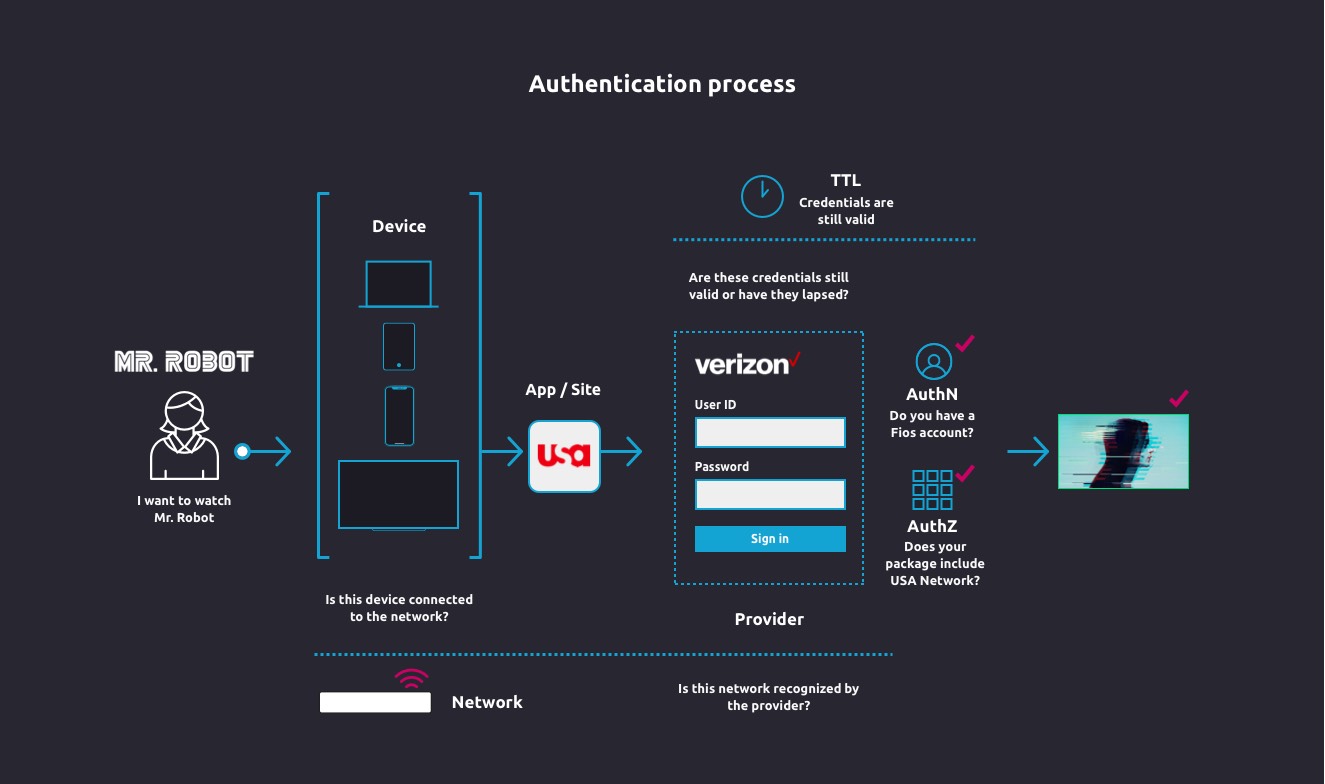
Competitive analysis - user flow diagrams
We focused on Netflix, FXNow and Hulu, which are all aggregators of content from multiple channels and networks.
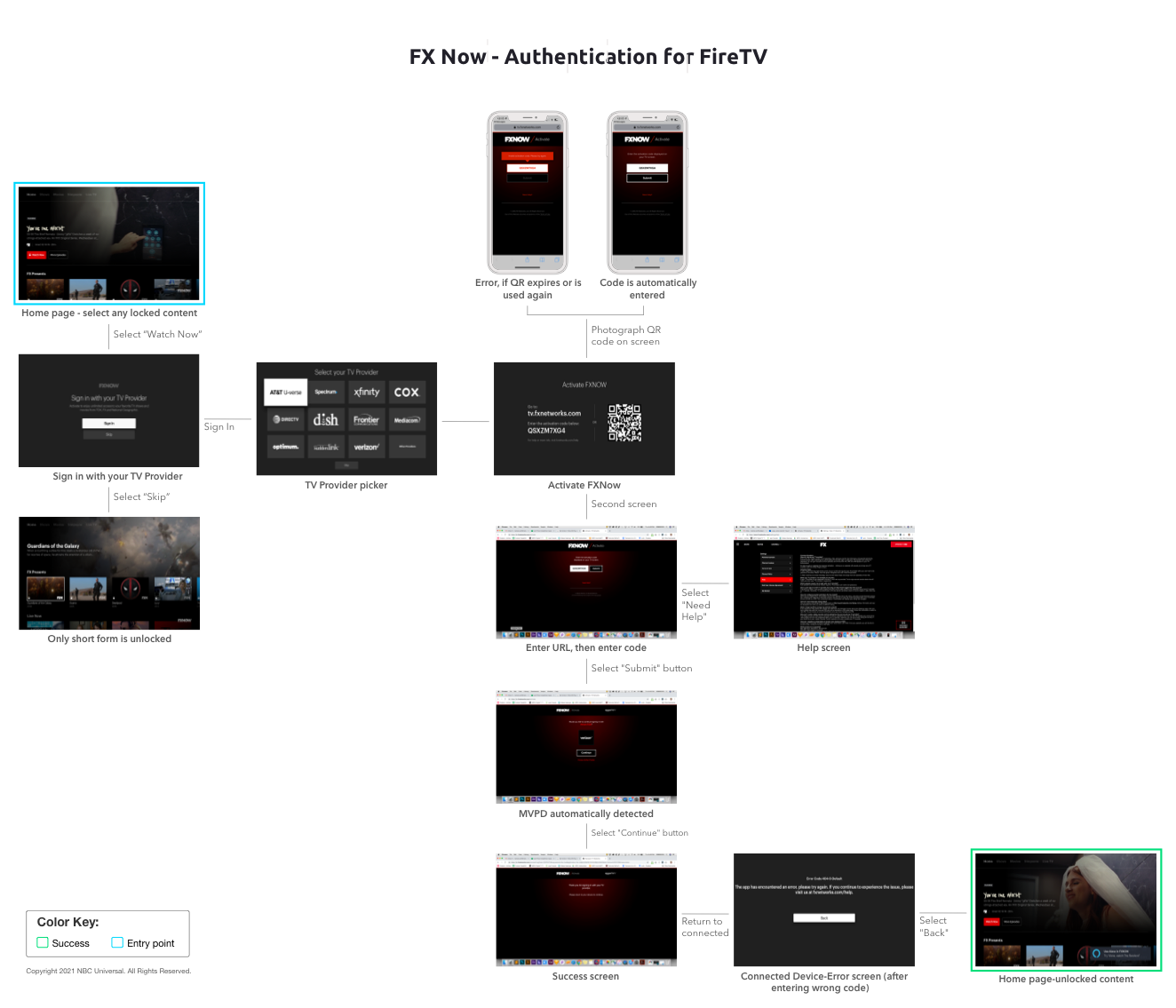
User journey - new user
This is one step in a series of moments during the journey, so that we could discover opportunities and pain points during a typical authentication process.
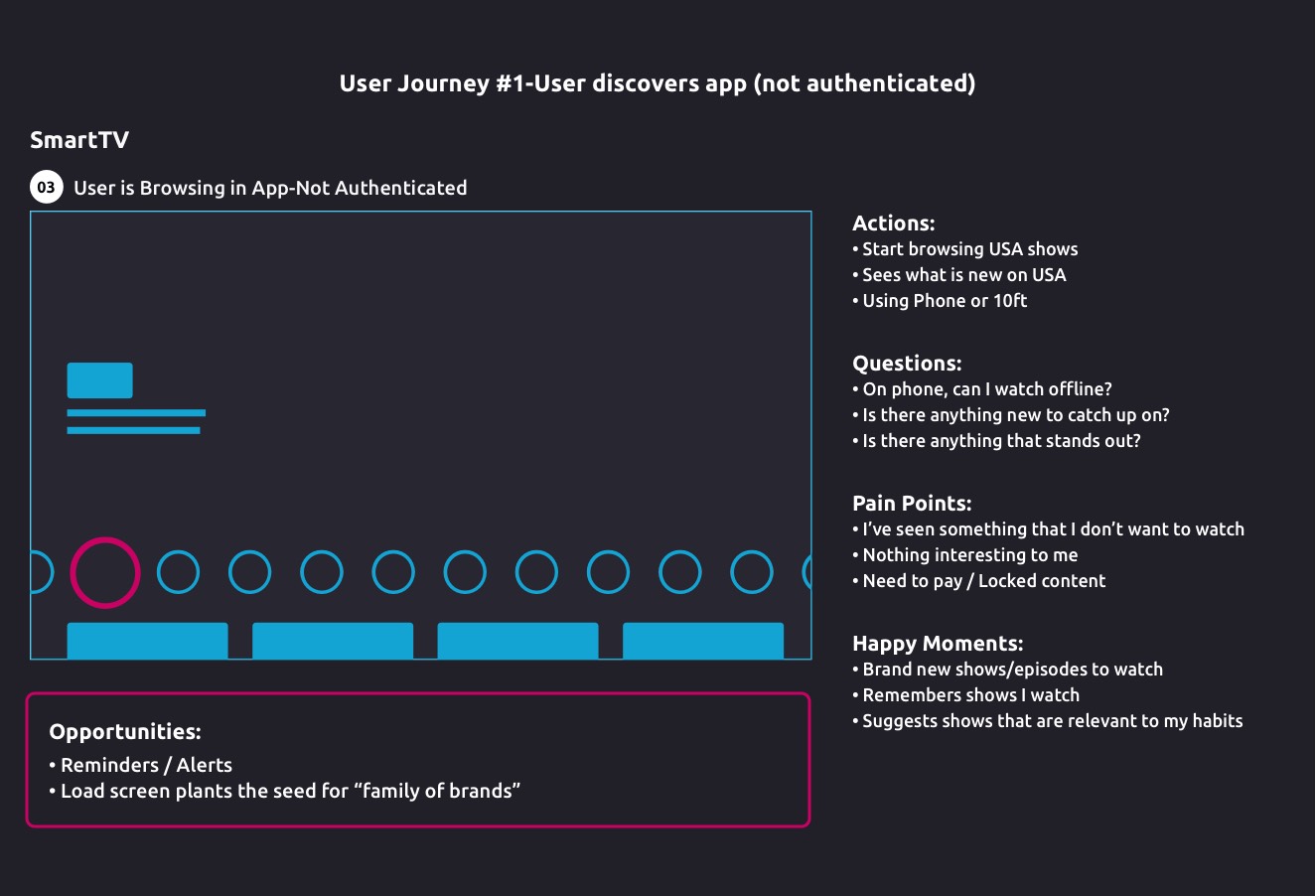
Baseline flow & use case features
Two UX Designers worked with the Product Owner to map out the baseline flow for TV Authentication (TVE). This shows the Authorization process from a bird's eye view, which would be used by the entire product team in order to understand the complexity of authentication.
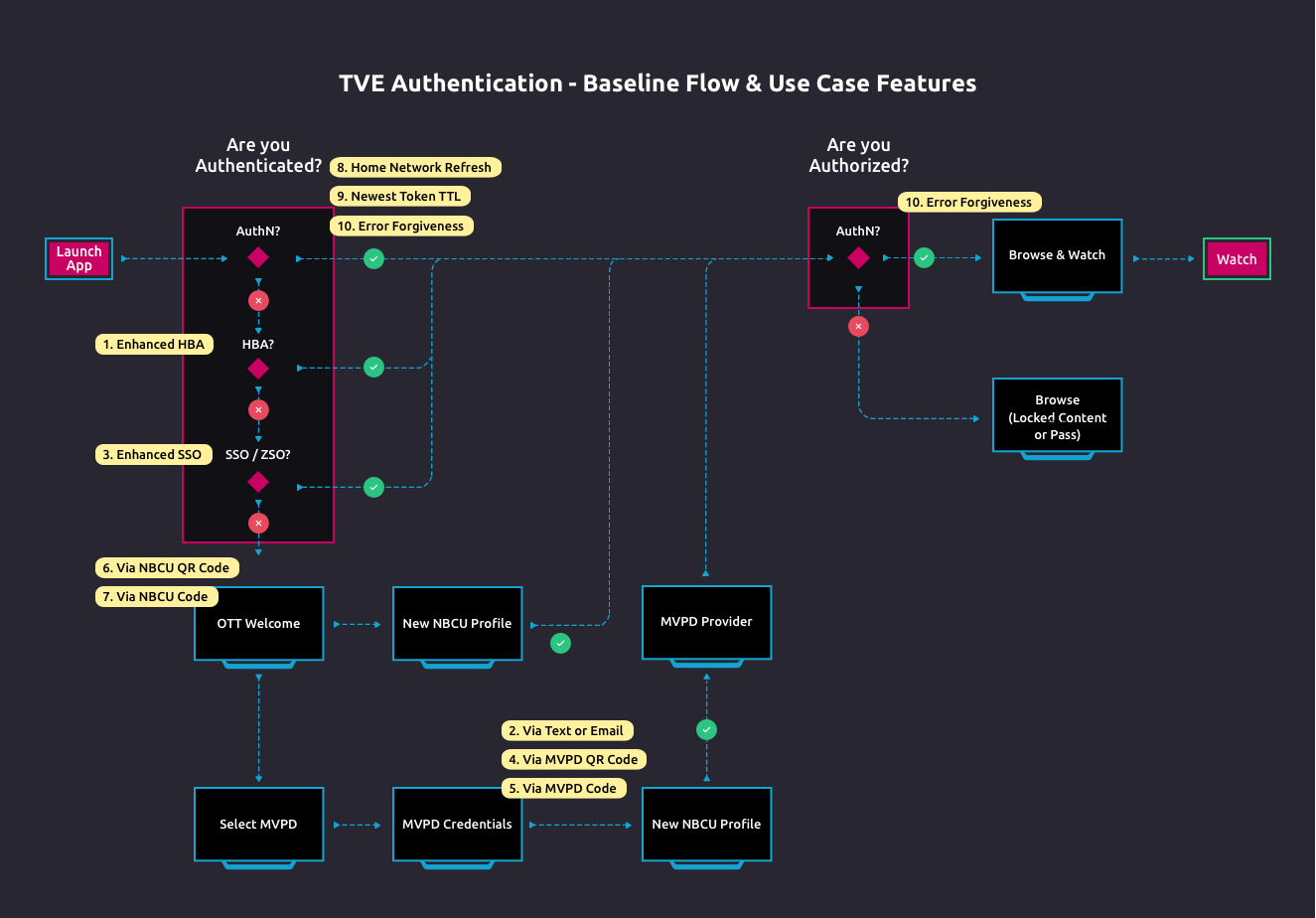
Some solutions
Enhanced home-based authentication
For instance, as a user opening the Peacock app for the first time at home, the IP address from the participating MVPD (Xfinity) would be recognized, so that the customer be automatically signed in through an enhanced version of Home-Based Authentication (HBA).
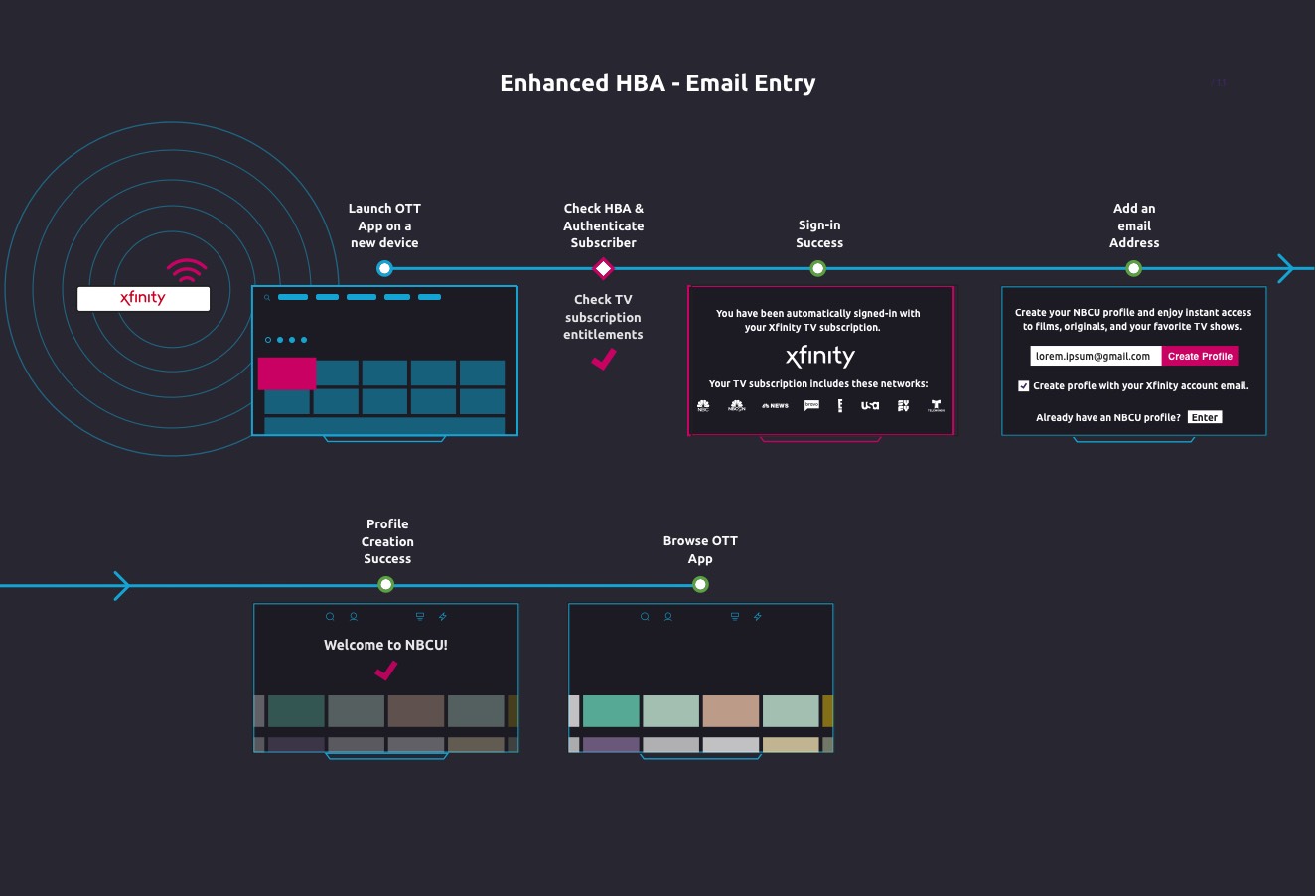
Authentication on a secondary device
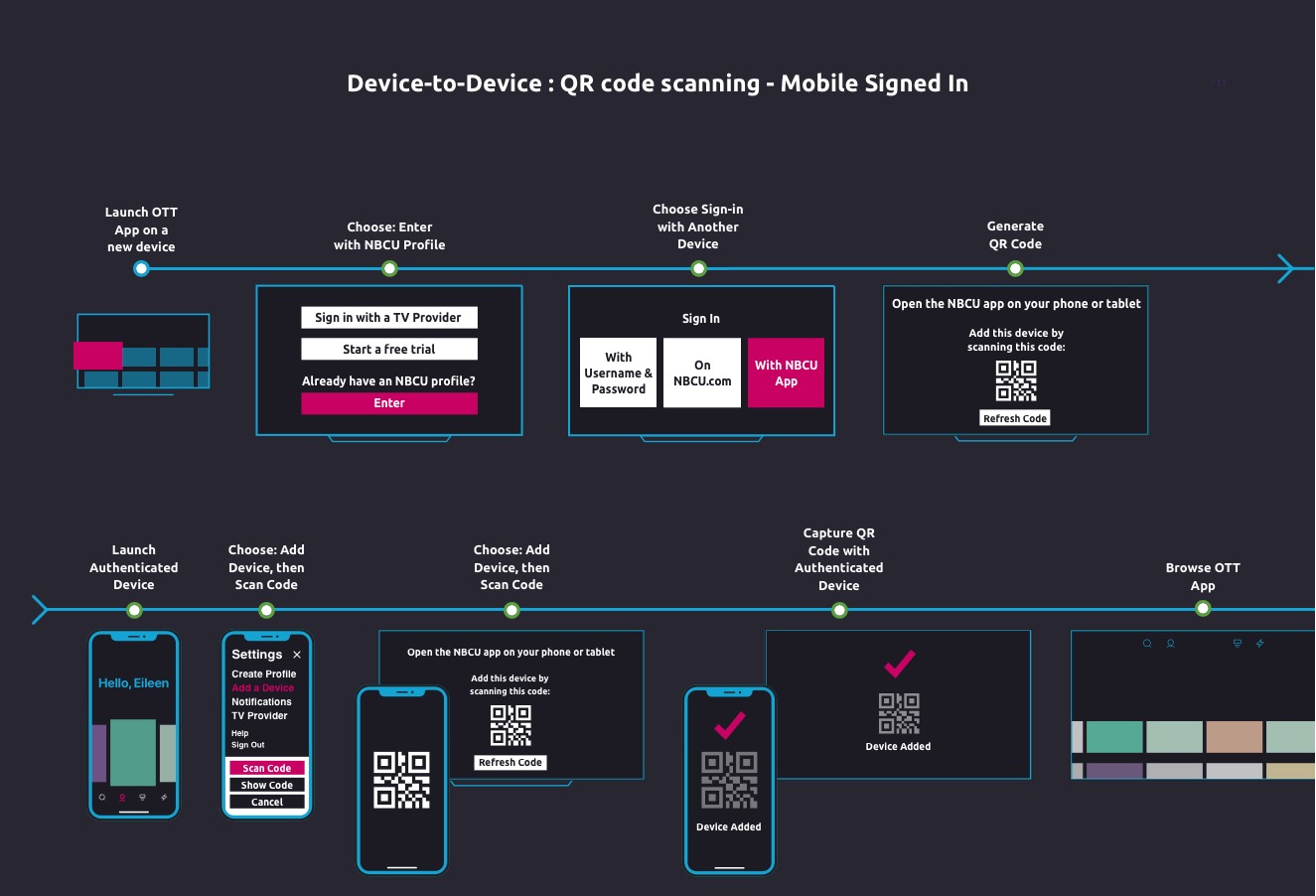
The results
Peacock TV streaming service is going strong
Successful product launch: I was one of the Senior Designers on the first phase of exploration and concepting for Peacock. The service achieved 10 million accounts within the first two weeks of its' full launch in July, 2020.
Hours watched: Monthly users of the service are consuming nearly 20% more programming hours each month than the traditional audience on NBC